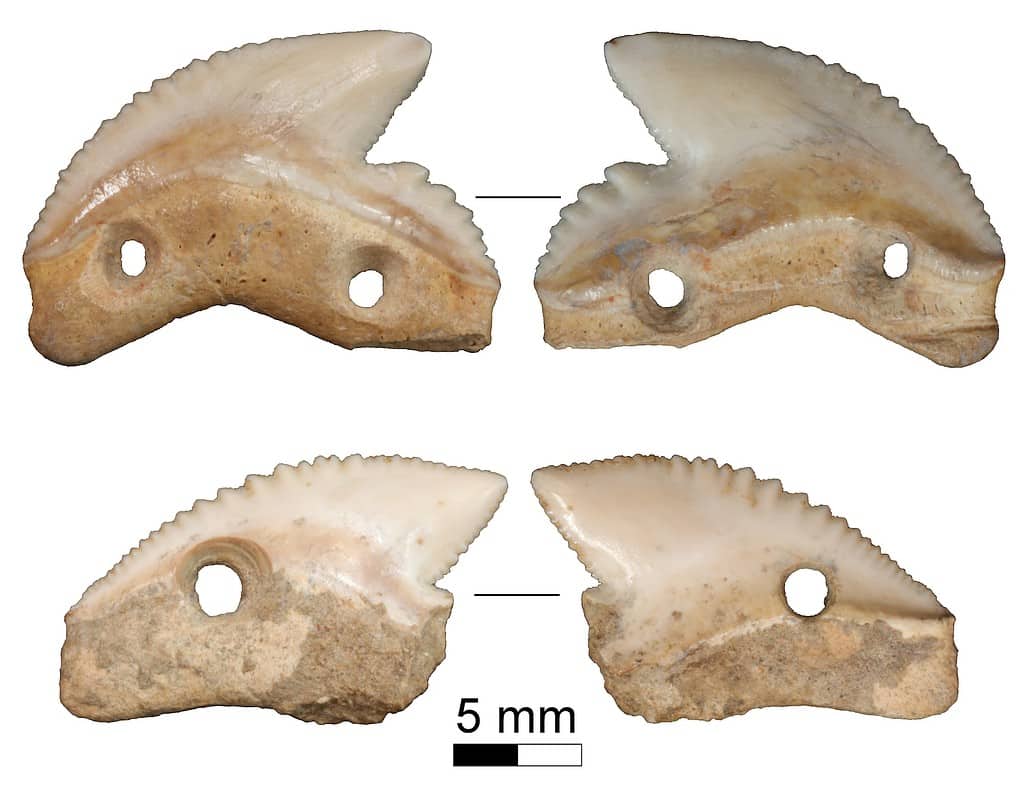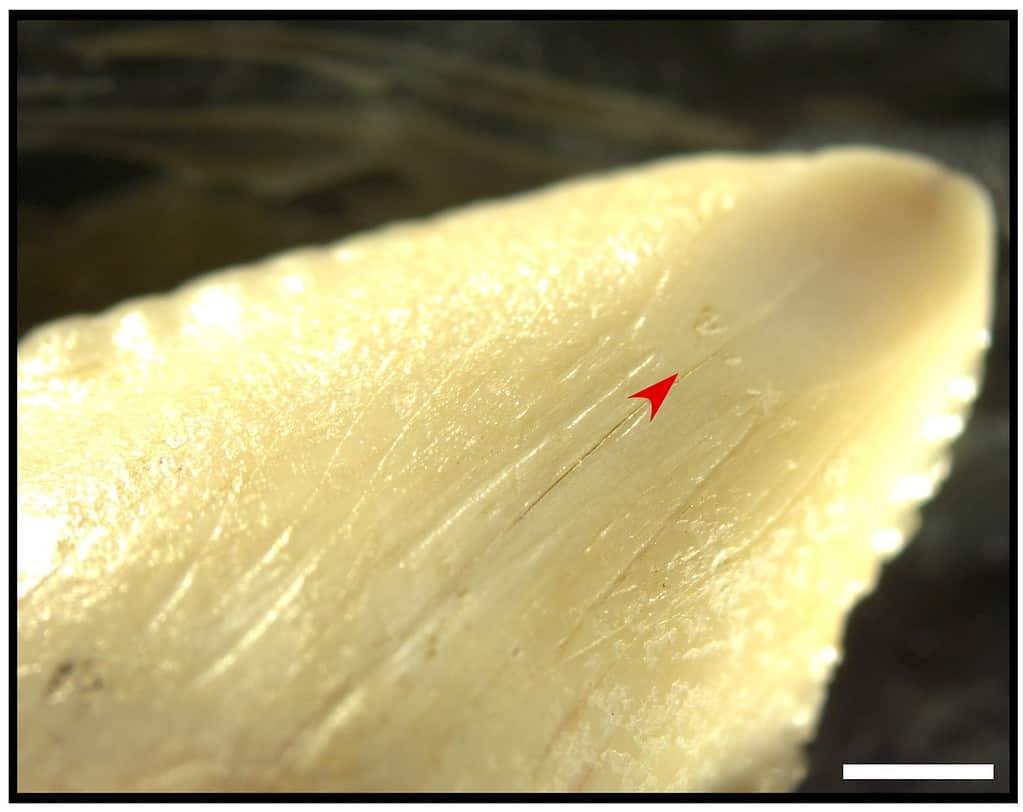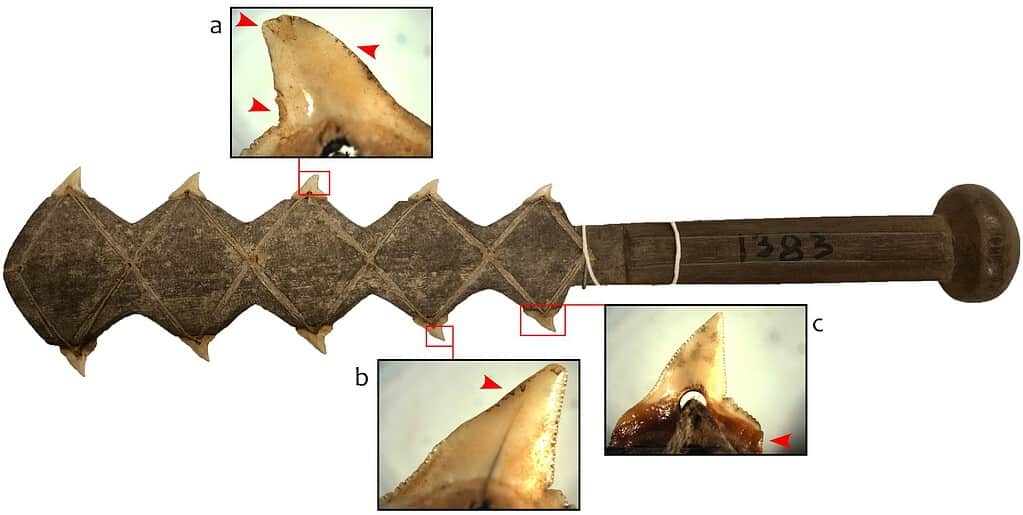
On the Indonesian island of Sulawesi, recent excavations have led to an amazing discovery: two tiger shark teeth, estimated to be around 7,000 years old, that were fashioned into blades. This find is noteworthy as it provides some of the earliest global evidence of shark teeth being used in composite weaponry.
Shark teeth into weapons
These weapons, as reported in the journal Antiquity, are not just older but more advanced than any previously discovered shark-tooth blades, which were at least 2,000 years their junior.
Utilizing a blend of scientific analysis, experimental reproduction, and insights from contemporary human societies, the Australian and Indonesian scientists surmised that these teeth had been adjoined to handles, crafting them into blades. They were likely brandished during rituals or bouts of warfare.

Both of these shark teeth artifacts are attributed to the Toalean culture, a group that inhabited southwestern Sulawesi for several millennia. These enigmatic hunter-gatherers inhabited the island before Neolithic farmers from mainland Asia (“Austronesians”) spread into Indonesia around 3,500 years ago.
The teeth, from tiger sharks approximately two meters long, had distinct perforations. Further analysis indicated that these teeth were fastened to a handle using a mix of mineral, plant, and animal materials, along with plant-based threads.
This attachment method is similar to that used in contemporary shark-tooth blades found in various Pacific cultures.

Why Shark Teeth?
The choice of using shark teeth in weaponry might seem unusual. However, people made do with what they could since ancient oceanic cultures only had access to Neolithic technology. It was until they made contact with Europeans in the 17th and 18th centuries that they began incorporating metal tools.
Nevertheless, the shark knives weren’t that bad. Experimental reproductions showed that these blades were effective in delivering deep cuts. But their sharpness was a double-edged sword, as they could become blunt quickly, making them less practical for everyday use. Their ability to cause severe wounds might have limited their usage to special events or conflicts rather than as kitchen knives.

Across the globe, from Kiribati and Hawai’i, communities have incorporated shark teeth into their culture, especially those nestled along coastlines with a penchant for shark fishing. These teeth have been transformed into weapons, ritual objects, and even tattooing tools. The diversity in their use underscores the reverence and respect these communities held for these oceanic predators.
“For example, a fighting knife found throughout north Queensland has a single long blade made from approximately 15 shark teeth placed one after the other down a hardwood shaft shaped like an oval, and is used to strike the flank or buttocks of an adversary,” wrote the authors of the new study in an article for The Conversation.
“Weapons, including lances, knives and clubs armed with shark teeth are known from mainland New Guinea and Micronesia, while lances form part of the mourning costume in Tahiti.”

While other shark-tooth artifacts are much older, the Indonesian finds suggest a different story. They were not just decorative pieces but had a functional, perhaps even sacred, role in society.









